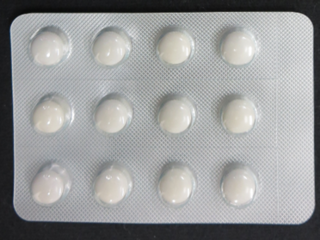PRODUCTS
Seirogan Sugar Coated Tablets
- Features:
- White, odorless, easy to swallow sugar coated tablet.
- Indications:
- Loose stools, diarrhea, food poisoning, vomiting, water poisoning, loose bowels, and diarrhea from dyspepsia
- Ingredients and contents:
- Every 12 tablets contains the following ingredients
| Ingredient | Content | Effect |
|---|---|---|
| Wood creosote | 270 mg | Inhibits increased peristalsis resulting from bacterial infection and regulates water content in the intestinal loop. |
| Powdered Geranium herb | 315 mg | Adjusts the functions of the intestinal tract. |
| Dried Phellodendron bark essence | 315 mg | Inhibits bacteria inside the intestines, strengthens the stomach muscles mg and inhibits inflammation. |


| Age | Dosage | Times/day |
|---|---|---|
| 15 years and abovee | 4 tablets | 3 times a day |
| 11–14 years | 3 tablets | |
| 5–10 years | 2 tablets | |
| Under 5 years | Do not use | |
Mechanism of the antidiarrheal activity of wood creosote
- 1. Inhibition of excessive peristaltic motion of intestines
- 2. Suppress the moisture secretion due to inhibition of Cl- channels; regulate the moisture in the intestinal tract
Wood creosote, the principal ingredient in Seirogan, has a long history as a known gastrointestinal microbicidal agent. When administered orally, the intraluminal concentration of wood creosote is not sufficiently high to achieve this microbicidal effect. Through further animal tests, it is shown that antimotility and antisecretory actions are the principal antidiarrheal effects of wood creosote. Wood creosote inhibits intestinal secretion induced by enterotoxins by blocking the Cl(-) channel on the intestinal epithelium. Wood creosote also decreases intestinal motility accelerated by mechanical, chemical, or electrical stimulus by the inhibition of the Ca(2+) influx into the smooth muscle cells. In this overview, the antimotility and antisecretory effects of wood creosote are compared with those of loperamide. Wood creosote was observed to inhibit stimulated colonic motility, but not normal jejunal motility. Loperamide inhibits normal jejunal motility, but not stimulated colonic motility. Both wood creosote and loperamide inhibit intestinal secretion accelerated by acetylcholine. Wood creosote was found to have greater antisecretory effects in the colon than loperamide. Based upon these findings, it is concluded that the antidiarrheal effects of wood creosote are due to both antisecretory activity in the intestine and antimotility in the colon, but not due to the microbicidal activity as previously thought. Wood creosote was found to have no effects on normal intestinal activity. These conclusions are supported by the results of a recent clinical study comparing wood creosote and loperamide, which concluded that wood creosote was more efficacious in relieving abdominal pain and comparable to loperamide in relieving diarrhea.
Clinical data
Multicenter, double-blind, randomized comparison of wood creosote, the principal active ingredient of Seirogan, an herbal antidiarrheal medication, and loperamide in adults with acute nonspecific diarrheaopen_in_newKuge T, open_in_new Shibata T, open_in_newWillett MS
Abstract
- BACKGROUND:
- Seirogan, an herbal medication containing wood creosote, a mixture of simple phenolic (single-ring)compounds, has been marketed in Asia for the past century as an antidiarrheal and antispasmodic medication. This was the first randomized, double-blind study of this herbal medication in patients with acute, nonspecific diarrhea.
- OBJECTIVE:
- Seirogan, an herbal medication containing wood creosote, a mixture of simple phenolic (single-ring)compounds, has been marketed in Asia for the past century as an antidiarrheal and antispasmodic medication. This was the first randomized, double-blind study of this herbal medication in patients with acute, nonspecific diarrhea.
- METHODS:
- This double-blind, randomized, active-controlled study was conducted at 12 centers across the United States and Mexico. Patients aged >or=18 years with acute, nonspecific diarrhea, defined as a history of diarrhea for < or=72 hours and passage of >or=3 unformed stools in the 24 hours before the study, accompanied by >or=1 associated symptom (ie, nausea, vomiting, abdominal cramping, and/or fever [< or=101.0 degrees F or < or=38.3 degrees C]), were eligible for the study Patients received wood creosote 135 mg (< or=5 doses/d) or loperamide 4 mg (loading dose) followed by 2 mg (< or=8 mg/d) after each loose stool for < or=3 days. The primary efficacy end point was the time to the last unformed stool (TTLUS). Clinical safety laboratory tests and patient diaries were used to assess tolerability.
- RESULTS:
- One hundred twenty-three patients (74 women, 49 men; mean [SD] age, 42.6 [14.9] years; age range, 18-90 years) were randomized to receive wood creosote (n = 60) or loperamide (n = 63). Eighty-four of the 123 enrolled patients (68.3%) were Hispanic, 18 (14.6%) white, 17 (13.8%) black, and 4 (3.3%) Asian or Pacific Islander. The majority of patients (88.3% in the wood creosote group and 95.2% in the loperamide group) had abdominal cramping as the predominant associated symptom. The median (interquartile range [IQR]) TTLUS was similar between groups (24.4 [6.3-36.8] and 22.1 [3.5-32.1] hours in the wood creosote and loperamide groups, respectively), as was the median (IQR) time to total relief (31.0 [15.7-47.8] and 28.5 [13.5-43.5] hours in the wood creosote and loperamide groups, respectively). The mean (SD) numbers of unformed stools on day 1 were 3.31 (2.15) and 2.22 (1.25) in the wood creosote and loperamide groups, respectively (P < 0.002). The percentages of patients with improved or resolved abdominal cramping at the end of day 1 were 92.5% (49/53) and 78.0% (46/59) in the wood creosote and loperamide groups, respectively (P < 0.038). Both medications were well tolerated in the population studied.
- CONCLUSIONS:
- Wood creosote and loperamide had comparable antidiarrheal effects in these patients with acute, nonspecific diarrhea. Wood creosote appeared somewhat more efficacious in improving or resolving abdominal cramping, whereas loperamide appeared somewhat more efficacious in improving diarrhea. Both treatments were well tolerated.
| Loperamide(62 patients) | Wood creosote(60patients) | |
|---|---|---|
| Improved or resolved | 78.0% | 92.5% * |
- HOME
- PRODUCTS
